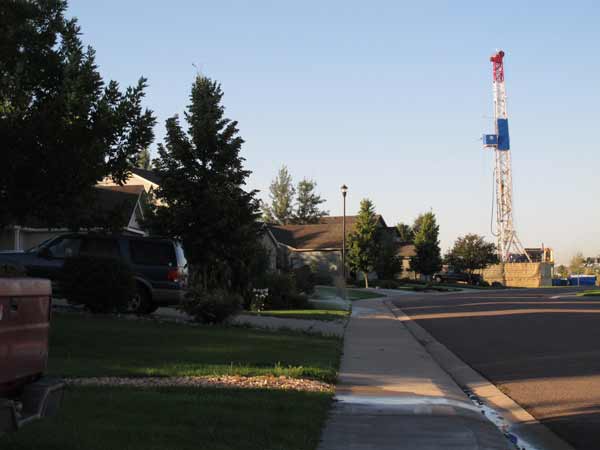When my wife and I pulled into a relative’s subdivision in Frederick, Colo., after a wedding on a recent weekend, it was a surprise to suddenly find a 142-foot-tall drill rig in the backyard, parked in the narrow strip of land between there and the next subdivision to the east. It had appeared in the two days we’d been gone.
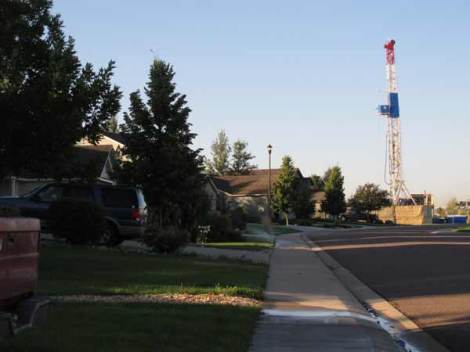
Erik Hoffner
This couple hundred grassy acres, thick with meadowlarks and bisected by a creek crowded with cattail, bulrush, willow, and raccoon tracks, sits atop the DJ Basin shale deposit. Our folks hadn’t known that when they bought the property last year, nor did they recall any useful notice that this new industrial neighbor was moving in.
We witnessed the increasing phenomenon of rigs popping up in suburban neighborhoods like mushrooms overnight. The craze of the gas rush means that companies won’t hesitate to drill wherever shale deposits lie — even if they’re under a school or a subdivision. The message to homeowners in towns big and small alike seems to be: You are on notice. The ills of fracking that were once viewed as a rural concern — contamination of air and water, noise pollution, reduced safety on roads jammed with heavy trucks — are coming to your backyard, too.
Their neighborhood was now lit 24/7 by floodlights and featured the incessant low grind of the drill’s nearly 900 HP Caterpillar engine, the clanking of roughnecks beating on pipe at 2 a.m., and regular snorts from the rig’s massive 525 HP diesel generator … loud enough that we kept the windows closed to hear the television at night.
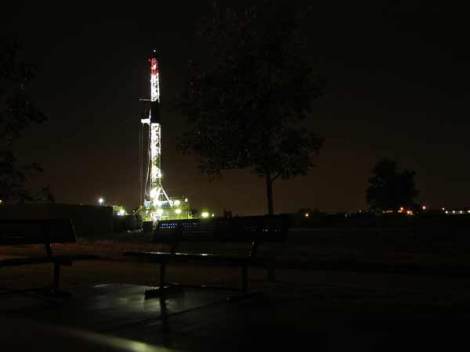
Erik HoffnerView from the picnic pavilion: nights are flooded with light since the drilling began.
We stared at this potentially toxic tower surrounded on three sides by many homes of the Eagle Valley and Raspberry Hill developments, and on the other side across a county road, by Legacy Elementary School. It seemed that the rig was only about 300 feet from the nearest homes, and about the same to a playground. Definitely too close.
But as a member of Fracking Colorado (which fights such projects in the Denver suburb of Aurora) told me by email, “The setback for wells from homes in urban areas was 350 feet. The new setback rules have increased that distance to 500 feet, but that probably was not in effect when this permit was granted. The new rules are effective as of Aug. 1, 2013. Also, when they re-enter an existing abandoned well, that was there before the homes were built, they can be closer than 350 feet to homes.”
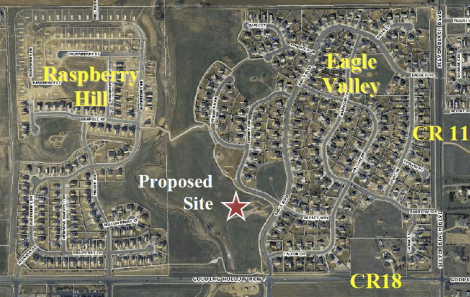
Approximate current location of the rig.
An aerial map did seem to reveal the presence of a previous wellhead, but the difference between 300, 350, or even 500 feet seemed trivial, given the industry’s uninspiring track record on air and water pollution, plus the occasional explosion.
But then there are energy companies that think they don’t need any meaningful setback at all: Take a current frack-job just to the north. The derrick looms so near roads and powerlines that it’s potentially in direct contact with people in case of an accident, in direct violation of setback rules. Unfortunately for the managers of that project, U.S. Rep. Jared Polis owns a home across the street. His threat of a legal injunction prompted an apology from the company and a $26,000 fine from the state last week, although the drilling continues.
Back in Frederick, concerns of abutters went unheeded. After news of the project eventually became known (rules about notice vary, with some towns only requiring signs be posted on fields in the project area), numerous residents spoke up about safety, congestion, air quality, proximity to the school, and noise.
Interestingly, it’s town-owned land that’s being debated, so I suppose they will be collecting the check, as outlined in the town’s board of trustees meeting minutes on June 11: “Upon approval of the (Surface Use Agreement) and drilling permit application, the Town would be paid … a total of $20,000. In addition, the Town would receive a nominal amount of residual compensation for its share of the minerals …”
Hardly sounds like enough remuneration (a new pickup truck for the highway department?) given the steadily souring opinion of residents, one of which stated in a letter to the trustees on June 11: “Many homeowners have said they didn’t think it would do any good to come to meetings and give their input because it didn’t do any good in past years. Please fight for us, the citizens you represent, and don’t allow (them) to drill in Eagle Valley.”
But the drilling has begun, and a shrieking frack rig is now a regular feature of the hammock time, dog walks, and backyard barbecues of hundreds of people.
Here’s what that looks like:
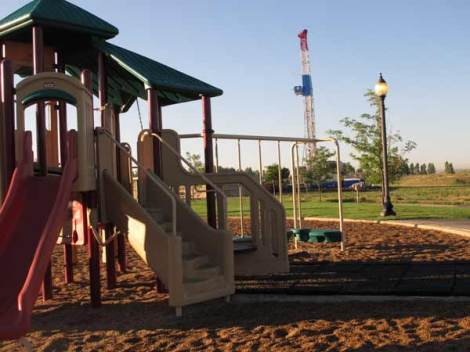
Erik HoffnerPlayground view.
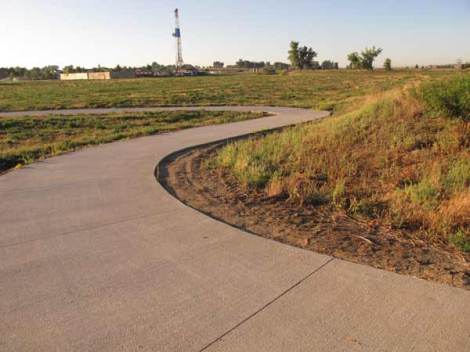
Erik HoffnerView from the bike path.

Erik HoffnerIronic flame of a tiki torch at a backyard BBQ foreshadowing possible events to come.
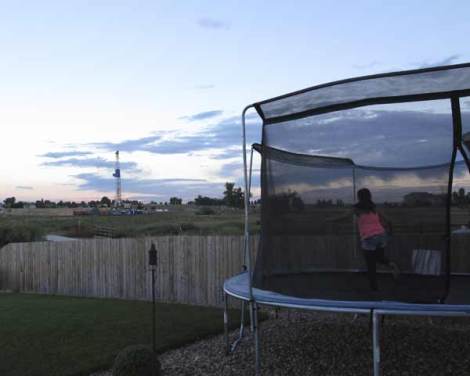
Erik HoffnerSunset, trampoline, rig.
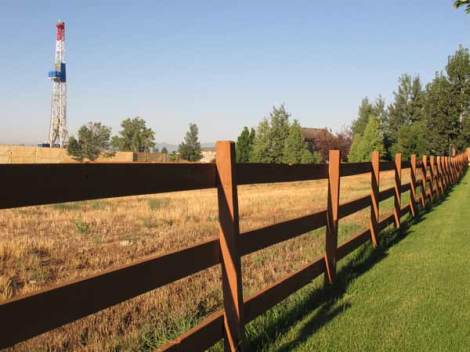
Erik HoffnerMany homeowners wish fences made better neighbors.
Update: We’ve dropped references to “fracking rigs” as the fracking comes after the drilling.

